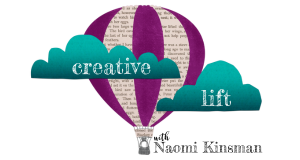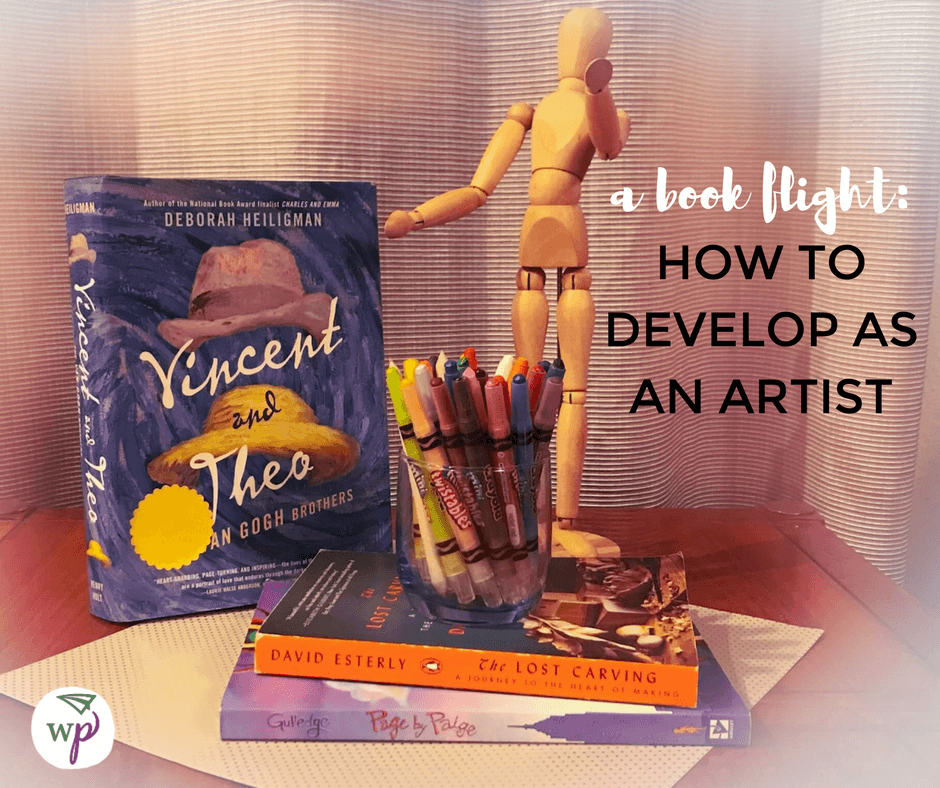Whether you’re a writer, visual artist, actor, director, or artist in any other creative medium, how might you build a mindset that helps you develop as an artist?
Like any question worthy of a book flight, this line of inquiry has layers and complexity. What can we learn about an artist’s mindset from history, kidlit, and memoir?
I’ve chosen three titles for this flight. You’ll likely find that the titles listed here spark reading ideas of your own. Feel free to mix and match, swapping titles in and out. Above all, I wish you inspiration and joy as you savor the exploration.
How To Develop as an Artist: A Book Flight
Vincent and Theo: The Van Gogh Brothers by Deborah Heiligman
“Success is sometimes the outcome of a whole string of failures,” Vincent tells his brother Theo, as he fills canvas after canvas, pursuing his dream. Or possibly it would be more accurate to say that he is pursuing his identity. He also says, “I keep making what I can’t do yet in order to learn to be able to do it.”
In this deeply researched and beautifully crafted work of YA narrative nonfiction, Deborah Heiligman draws us into the world of Vincent Van Gogh and his brother, Theo. Throughout the book, I was reminded that artists are people, flawed, passionate, driven people. I was reminded that becoming an artist isn’t (as we so often try to convince ourselves in our competitive world) a win-or-lose game, but rather a choice we make on a daily basis. Despite how we feel, our circumstances, our successes or our failures, we can always make the choice to create.
The imagery in this graphic novel takes my breath away. The spreads are varied, full of tone and contrast, and they flow seamlessly between emotional metaphor and real-world scenes. Our heroine, Paige, is in the process of meeting herself on the pages of her sketchbook. As she learns to see the world with artist’s eyes, she also helps me see my own world with a little more depth.
She and Vincent are artists of vastly different scope and background. Yet in their points of connection, I see interesting patterns. What can their determination, their disappointments, and their growing awareness teach me about my own process of becoming an artist?
The Lost Carving: A Journey into the Heart of Making by David Esterly
I would never have picked up this memoir if my best friend, Emily, hadn’t placed it in my hands. We were on a trip to that most beloved of bookstores, Powells. As it was, I flipped through, wondering what a book about woodcarving might have in it for me. However, from the first line, I was mesmerized. For one thing, Esterly is an incredible writer. For another, he is the kind of passionate artist that I long to be.
Within this book’s pages, you’ll learn about history, about the art of woodcarving, and about a certain kind of mindful attention that makes creative work meaningful. A quote from the book, to give you an idea of the treat you’re in for: “It struck me that this {woodcarving] was like being a writer, staring down at a blank piece of paper, pen in hand. In front of you the same smooth vacant surface waits, and within you the same nervous mustering of resolve, the same sense that the first stroke is important and a bad start might be ruinous.”
If you pick up the books in this flight, I’d love to hear what you think. Let me know what questions they bring to mind for you. And please share your ideas for other titles that ought to be part of this flight. I’m always on the hunt for an excellent read.

